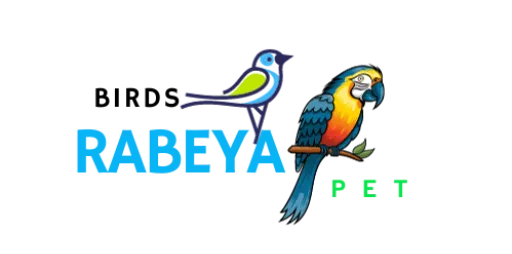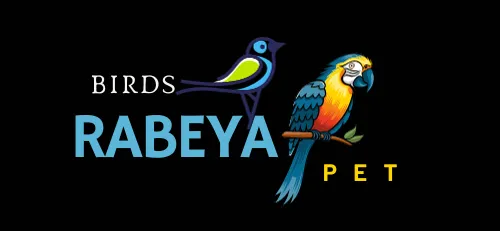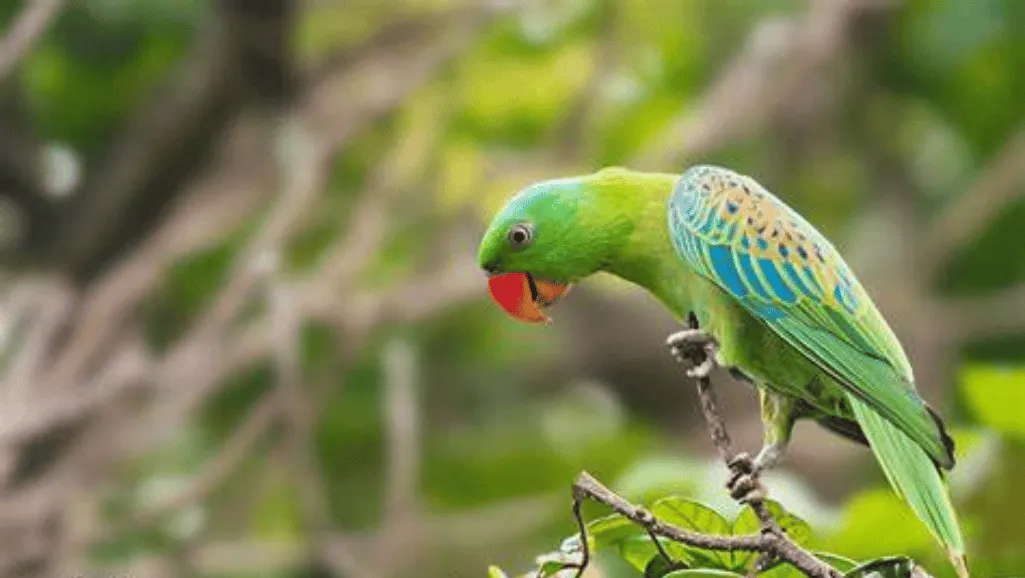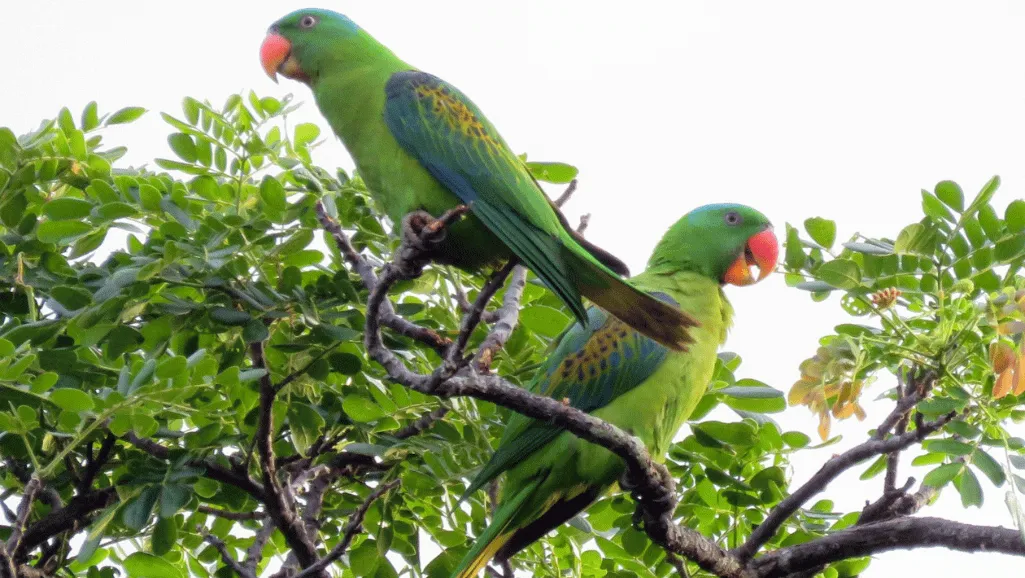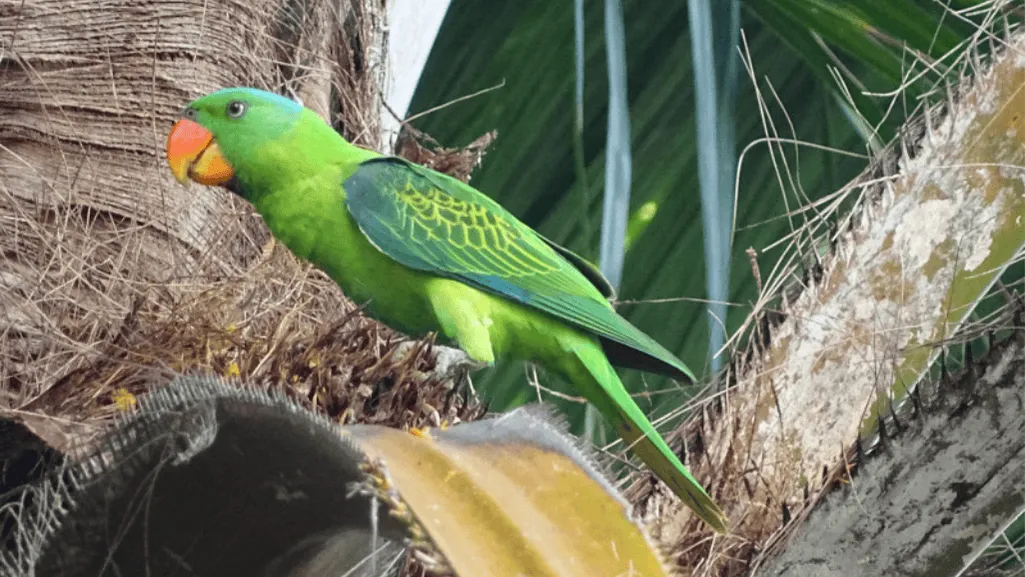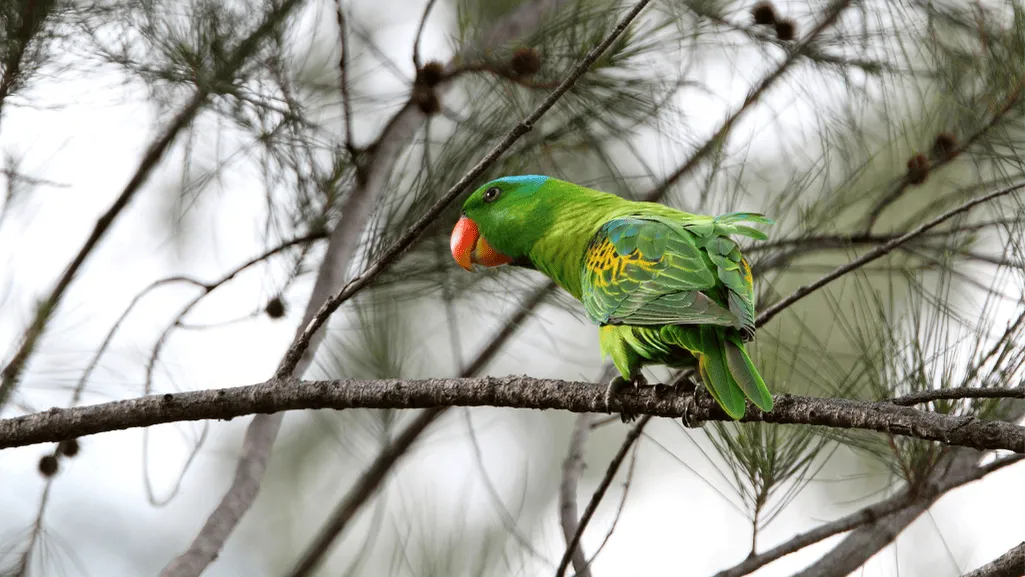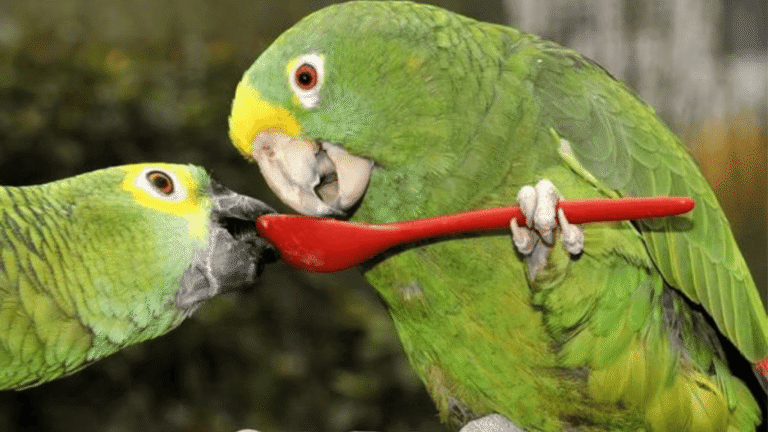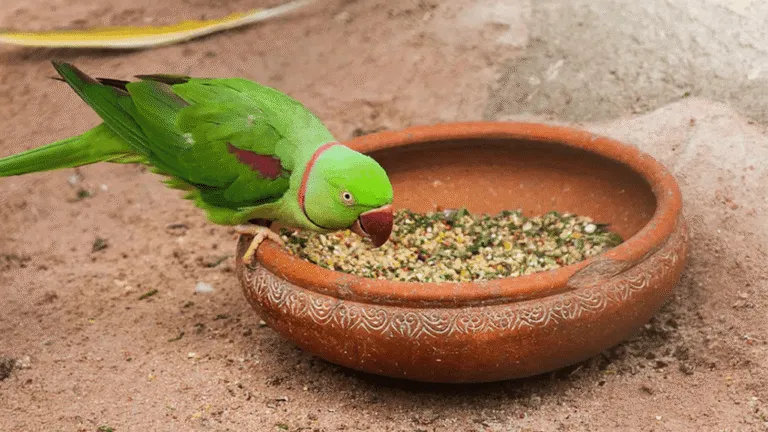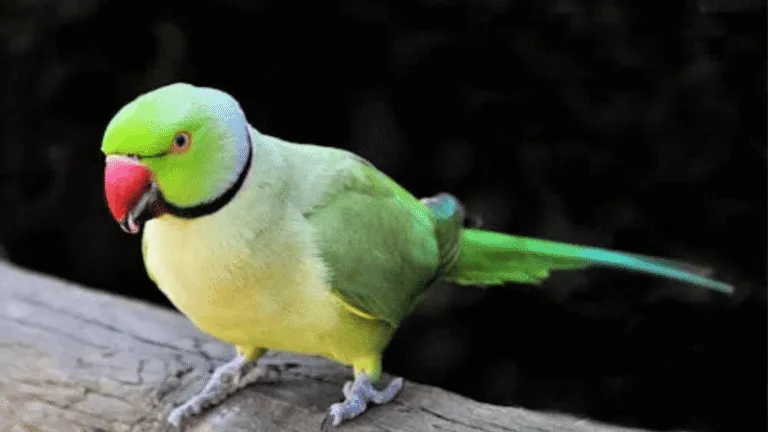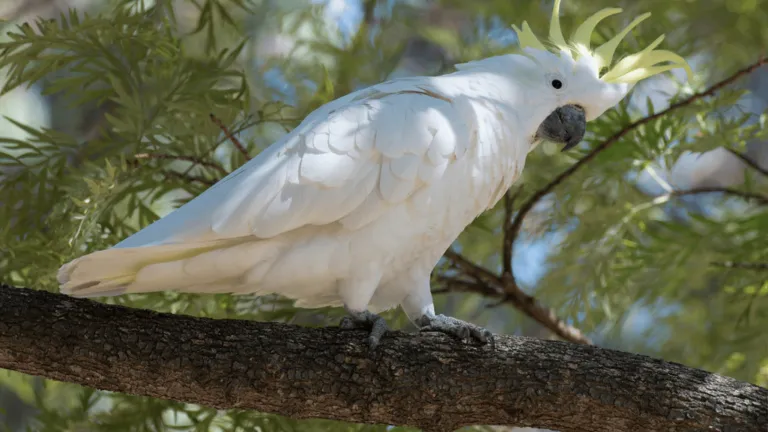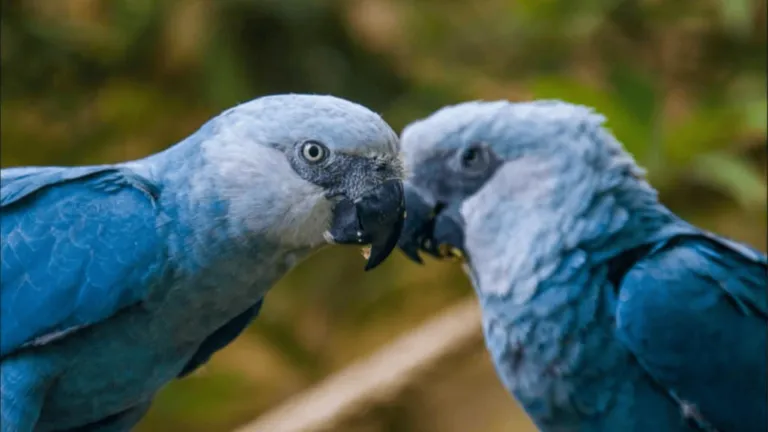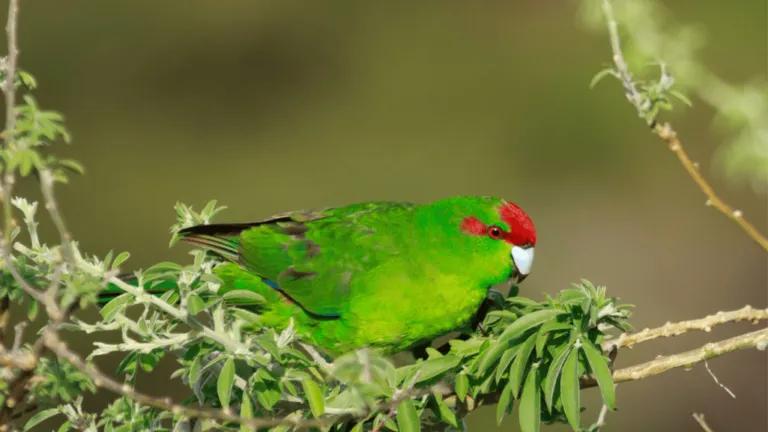The Blue Naped Parrot, also known as the blue crowned green parrot, is loved for its bright green feathers and blue crown. It belongs to the parrot family and is found in the Philippines. Keeping a Blue Naped Parrot as a pet needs careful attention to its diet and living space.
These birds are near threatened due to habitat loss and illegal trade. Yet, owning a Blue Naped Parrot can be incredibly rewarding. It’s important to understand their needs, from food to spacious homes, to keep them healthy and happy.
Key Takeaways
Blue Naped Parrots are known for their captivating blue accents and rich green feathers.
The survival of this parrot species is imperiled by habitat destruction and the bird trade.
Offering mixed seeds, fruits, and vegetables is essential to the diet of a pet parrot.
In their natural habitat, Blue Naped Parrots thrive in flocks, primarily on Mindoro and Palawan.
Enriched enclosures and proper care are vital for these parrots’ longevity, potentially up to 50 years in captivity.
Introduction to the Blue Naped Parrot
The Blue Naped Parrot is a standout among exotic bird species. It’s known for its bright colorful feathers and a blue patch on its neck. This bird calls the Philippines home, living in forests and plantations. The Luzon parrot, another name for the Blue Naped Parrot, is native to the Philippines and faces threats from habitat loss and trapping. But, their Blue Naped Parrot habitat is facing threats from humans.
There are only 1,500 to 7,000 of these parrots left. Back in the 1990s, there were up to 10,000. They used to be seen on 45 islands in the Philippines and Indonesia. Now, they’re rare in many places.
This parrot is not just beautiful, it’s also important for the forest. It helps spread seeds, which helps the forest grow. But, it’s in danger because of bird trapping and losing its home to farming and logging.
Conservation Status | Population | Major Threats |
|---|---|---|
CITES Appendix II, National Parks | 1,500-7,000 mature individuals | Habitat loss, trapping for trade |
Conservation Efforts | Historic Population (1993) | Habitat Details |
Listed in several national parks | Below 10,000 individuals | Secondary forests, plantations |
Efforts to save the parrot include being listed in CITES Appendix II and protecting its habitat. Parks like Bataan, Quezon, and Palawan’s St. Paul’s Subterranean River National Park are key. They offer safe places for the parrot to live.
A Glimpse into the Blue Naped Parrot’s Native Habitat
The Blue Naped Parrot is a colorful bird found in the Philippines. It lives in areas like Mindoro and Palawan. These places have lush forests and forest edges that are key for the parrots’ survival.
Plantations also play a big role in the parrots’ lives. They offer food and help spread seeds, which is good for the environment. The parrots can be found up to 1000 meters high, showing they can adapt to different places.
These parrots usually live in small groups, with less than a dozen birds. This shows they have a complex social life. Saving these tropical birds is important because they play a big role in their ecosystems. But, they face threats like losing their homes and being harmed by humans.
Element of Habitat | Description | Impact on Blue Naped Parrot |
|---|---|---|
Secondary Forests | Dense vegetation providing shelter and food | Essential for nesting and protection from predators |
Forest Edges | Transition areas that offer a diverse range of food sources | Supports feeding and social interaction |
Plantations | Areas often rich in fruit-bearing trees and crops | Important for food supply and seed dispersal activities |
The Blue Naped Parrot habitat is a unique place that needs to be protected. We must keep their homes safe to make sure they can keep living in our changing world.
Captivating Colors: The Blue Naped Parrot’s Appearance
The Blue Naped Parrot is a stunning sight, with vibrant plumage that shows off avian beauty. Their green body shines with a light blue rear crown and nape. The lower back and rump have a pale blue lower color.
Their feathers also have orange-brown patterns on black coverts, making their shoulders look scalloped. The blackish underwings and green underwing coverts add to their distinctive appearance. This makes them a hit among bird lovers and highlights their special place in nature.
Their wings are a mix of black and green, adding to their beauty. They also have a large, deep red beak. This beak is not just for looks; it’s also very useful.
Interestingly, males and females look the same, showing off their vibrant colors equally. This makes watching them even more fascinating.
For more on the Blue Naped Parrots, check out this detailed look at the Tanygnathus genus.
Species | Average Lifespan (Years) | Length (Inches) | Weight (Ounces) |
|---|---|---|---|
Yellow-Naped Amazon Parrots | 40-50 | N/A | N/A |
Hyacinth Macaws | 50-60 | 40 | 42-51 |
Blue-Throated Macaws | 60-80 | N/A | 16-48 (0.5-1.5 kg) |
Scarlet Macaws | N/A | 31-38 | 32-39 |
Green-wing Macaws | N/A | 26-40 | 32-60 |
The Blue Naped Parrot’s striking looks make them a joy to watch. They also help spread awareness about avian beauty and the importance of preserving it.
The Blue Naped Parrot Diet: Nourishment for Vibrancy
The way the blue naped parrot feeds is key to its bright colors and health. These tropical birds need a mix of fruits, seeds, nuts, and berries.
In the wild, they eat lots of fruits like mangoes and berries. These foods help keep their colors bright and their bodies healthy. They also eat nuts and seeds, which give them important oils and fats.
Preferred Foods in the Wild
Blue Naped Parrots are great at finding food in their tropical home. They love to eat figs, papayas, and berries. These foods make them look colorful and full of life. They also eat nuts like almonds and walnuts, which give them lots of energy.
Feeding Tips for Captive Blue Naped Parrots
If you want a Blue Naped Parrot as a pet, it’s important to feed it right. A good diet for them includes:
High-quality pellets made for parrots to get all the nutrients they need.
Fresh veggies and fruits like apples, carrots, and leafy greens. Change these often to keep them healthy.
Nuts are good for them too, but only in small amounts. They should be unsalted and raw.
Feeding them a variety of foods keeps them healthy and happy. It also lets them act like they’re foraging in the wild, which keeps them busy and smart.
By following the Blue Naped Parrot’s diet, you can make sure your pet is happy and healthy. They will show all the energy and color of their wild friends.
Behavior and Social Dynamics of Blue Naped Parrots
The blue naped parrot behavior shows a mix of talking, socializing, and smart thinking. They are known as an intelligent bird species. In their natural homes, these birds use their social dynamics to get around and stay together.
Studies show that blue naped parrots make many sounds. These sounds help them talk and work together. Like other birds, they use special calls to tell each other about food or danger.
Blue naped parrots often sleep together, which helps them avoid predators. It also lets them share important information.
This group behavior helps them survive. It makes finding food better and keeps them safe. These gatherings are key for blue naped parrot behavior. They learn and practice their calls here, which is important for talking to each other.
They choose safe places to sleep close to food.
They meet up at dawn and dusk, showing they like to be together.
Behavior | Benefits |
|---|---|
Communal Roosting | Enhances safety, feeding efficiency |
Vocal Learning | Facilitates communication and social bonding |
Flock Coordination | Optimizes navigation and resource location |
These traits show how smart and social blue naped parrots are. Their complex social lives and talking skills prove they are an intelligent bird species. They can handle different environments and interact in complex ways.
Blue Naped Parrot
The Blue-Naped Parrot (Tanygnathus lucionensis) is a medium size parrot known for its bright blue hindcrown. It lives in the Philippines and Indonesia’s Talaud Islands. The International Union for Conservation of Nature (IUCN) says it’s Near Threatened. This is because of lost habitats and trapping.
This bird, which is primarily green, eats mangoes, berries, seeds, nuts, and grains. It usually stays in groups of a dozen. But, it faces threats in places like Bataan National Park. These threats include deforestation and poaching.
The Blue-Naped Parrot is a species scarce across many islands due to habitat loss and illegal trapping, highlighting the urgency for conservation efforts.
Breeding Milestone | Date |
|---|---|
First Egg Laid | March 29 |
Second Egg Laid | March 31 |
Third Egg Laid | April 2 |
Egg Development Issue | May 2 |
First Chick Hatched | June 12 |
Second Chick Hatched | June 19 |
Complete Weaning | 8 weeks post hatching |
Mating Observed | July 22 |
The Blue-Naped Parrot also faces threats from the illegal pet trade. This is especially true in Palawan, as conservation groups have pointed out. Saving this bird is crucial. We need better protection and to raise awareness to stop these threats.
Health and Wellness: Caring for Your Blue Naped Parrot
Keeping a Blue Naped Parrot healthy means taking care of everything. This includes their food, exercise, and mental fun. Here are some tips to keep your parrot happy and healthy.
First, feed them well. They need 60-70% of their food to be high-quality pellets. Add 30-40% of fresh fruits and veggies, but avoid avocado. For more on their diet, check out this guide on Blue-winged macaw diet.
Take them to the vet twice a year. This helps catch any health problems early. For more info on caring for your parrot, see this parrot care guide.
Give them toys and play with them every day. This keeps them happy and stops bad behavior. Make sure their home is big enough for them to move around.
Dietary Component | Percentage | Notes |
|---|---|---|
Pelleted Feed | 60-70% | Main nutrition source |
Fruits and Vegetables | 30-40% | Avoid avocado; moderate fruits to 10% |
Water | Always accessible | Must be fresh and clean |
How well your Blue Naped Parrot does depends on your care. With the right care, you and your parrot can have a wonderful life together.
Conservation Efforts and the Future of Blue Naped Parrots
The Blue Naped Parrot, a vibrant symbol of tropical forests, faces many threats. They are listed as Near Threatened on the IUCN Red List. Habitat destruction and illegal bird trade have harmed their numbers, making conservation vital.
Organizations like the Katala Foundation have raised concerns about the increasing illegal trade of endangered bird species, particularly on the island of Palawan. This concern is linked to habitat loss and the depletion of bird populations, which emphasizes the urgency of conservation efforts.
These birds are key to their ecosystems. They help with biodiversity and seed dispersal, keeping forests healthy. Losing them would harm the environment, showing why saving birds is essential.
Current Conservation Status and Habitat Loss
The Blue Naped Parrot’s status is Near Threatened, according to the IUCN Red List. This calls for urgent conservation efforts. The Katala Foundation, on Palawan Island, is working hard to protect these birds through habitat management and anti-poaching.
How You Can Help
Everyone can help save endangered species like the Blue Naped Parrot. Here are ways to make a difference:
Support laws against the illegal bird trade.
Help or volunteer with bird conservation groups.
Spread the word about endangered birds to build support.
Choose pets responsibly to avoid supporting illegal trade.
Conserving birds is a team effort. By understanding the threats and helping, we can ensure the Blue Naped Parrots’ survival. Together, we can protect them and their habitats.
Blue Naped Parrots as Pets: Adoption and Care Requirements
The blue naped parrot is a popular pet bird known for its bright colors and friendly nature. This article will cover the key aspects of blue naped parrot care. It aims to help future owners understand how to keep these birds happy and healthy.
Choosing to adopt a blue naped parrot is a big decision. It’s a commitment to care for a bird that could be your friend for many years. To fully understand the care needed, let’s look at habitat, diet, and daily interaction.
Creating a great home for a blue naped parrot means providing lots of space. The cage should be at least a 3-foot cube. This space is crucial for their health and happiness, allowing them to fly and explore.
Category | Details |
|---|---|
Cage Size | Minimum 3-foot cube, larger preferred |
Diet | 75-80% high-quality pellets, 20-25% fresh fruits & vegetables |
Exercise | Minimum 3-4 hours daily outside the cage for social interaction and physical activity |
Life Expectancy | Typically around 40 years, can live up to 80 or more |
It’s also important to focus on the parrot’s diet. They should eat about 75% to 80% high-quality pellets. The rest should be fresh, safe fruits and vegetables. This diet keeps them healthy and matches their natural eating habits.
If you’re thinking about adopting a popular pet bird, be ready for a big commitment. Blue naped parrots need lots of attention and interaction. Neglecting them can lead to behavioral problems. Learning about their communication is key to their happiness.
Adopting a blue naped parrot can be a very rewarding experience. But, it’s important to be ready to provide a loving home. This means more than just a cage; it’s about giving them the care and attention they need.
Breeding Blue Naped Parrots: Challenges and Best Practices
Breeding blue naped parrots is a complex task. It needs careful attention to ensure their survival. Knowing how to breed them and following ethical breeding methods are key. This helps keep their genetic diversity alive and keeps the birds stress-free.
Understanding Blue Naped Parrot Breeding Habits
The blue naped parrot belongs to the Psittacidae family. They breed from April to June, choosing hidden tree cavities for their nests. This protects their chicks from predators and harsh weather. Mathurin Jacques Brisson coined Latin names for various species, including the blue-naped parrot, in his work. While Brisson’s names do not conform to the modern binomial nomenclature recognized by the International Commission on Zoological Nomenclature, his contributions laid the groundwork for later classifications, including updates made by Linnaeus. But, creating a good breeding space in captivity is hard.
Captive Breeding Ethics and Guidelines
Responsible breeding means creating a natural habitat for the parrots. Breeders must keep the population diverse and avoid inbreeding. With only a few hundred wild blue naped parrots, this is crucial. Following these guidelines helps ensure the species’ survival, offsetting the harm caused by past over-hunting.
Location | Estimated Population | Conservation Need |
|---|---|---|
Samar and Mindanao Islands |
| High |
Jolo and Tawi-Tawi Islands |
| Very High |
Primary Lowland Forests | Not specified | Essential legal protection |
Responsible breeding is vital for the blue naped parrot’s survival. It supports conservation and keeps the ecosystem balanced. With the right breeding spaces and ethical practices, these birds have a brighter future.
Conclusion
The Blue Mutation Yellow-Naped Amazons are a wonder and a key topic in parrot conservation. They can live up to 60 years and need a long-term commitment to protect them. Birdwatchers and experts admire their mimicry and varied behaviors.
These parrots form strong bonds and interact with their world in complex ways. They add depth and wonder to our lives. The Amazona genus, including the Cuban and festive amazons, shows the beauty of these birds.
However, these birds need careful care and understanding of the sacrifices needed. Owning one is a big investment, costing between $3,000 to $6,000. They need a spacious cage, at least 36 inches wide and 48 inches tall, for their well-being.
Despite the joy they bring, the loss of some populations, like in Martinique and Guadeloupe, is a reminder of wildlife’s fragility. This calls for global action in parrot conservation. Efforts to preserve their habitats and ensure ethical breeding are crucial.
Every step we take helps keep our planet’s ecosystems vibrant. The Blue Mutation Yellow-Naped Amazon’s story is a call to protect these rare birds. It’s a reminder of our role as guardians of biodiversity.
FAQ
What is a Blue Naped Parrot?
The Blue Naped Parrot, also known as Tanygnathus lucionensis, is a medium-sized bird. It is often confused with the Philippine green parrot due to its similar classification and distribution. It has a bright blue crown and nape, with green plumage and blue and red accents. They are from the Philippines and are known for being smart and social.
Why is the Blue Naped Parrot endangered?
The Blue Naped Parrot is near threatened due to habitat loss, illegal trade, and hunting. These issues have led to a decrease in their numbers. This calls for urgent conservation efforts to save them.
Where do Blue Naped Parrots live in the wild?
Blue Naped Parrots live in the Philippines. They are found in secondary forests, forest edges, and plantations. They help with seed dispersal and keep the ecosystem balanced.
What does the Blue Naped Parrot typically eat?
In the wild, Blue Naped Parrots eat fruits like mangoes and berries, seeds, nuts, and grains. This varied diet helps keep their plumage bright and their health good.
How can I care for a Blue Naped Parrot as a pet?
To care for a Blue Naped Parrot, give them a balanced diet, a big aviary, and regular vet visits. They also need daily social interaction to keep them happy and healthy.
What measures are being taken for the conservation of Blue Naped Parrots?
Efforts include saving their habitats, controlling the wildlife trade, and educating people about their plight. The Katala Foundation is working hard, especially in Palawan, to protect the species.
How can the average person help with Blue Naped Parrot conservation?
You can help by pushing for laws against illegal parrot trade, supporting conservation groups, and spreading the word about Blue Naped Parrots. This helps raise awareness and promotes responsible pet ownership.
What are the breeding habits of Blue Naped Parrots?
Blue Naped Parrots breed once a year, from April to June. They nest in tree cavities and lay and incubate their eggs there. Knowing these habits is key for breeding them in captivity.
Are there special considerations for breeding Blue Naped Parrots in captivity?
Yes, breeding them in captivity needs careful planning. It’s important to ensure their welfare and help the species. This includes creating a suitable environment, maintaining genetic diversity, and raising the young in a natural-like setting.
How long do Blue Naped Parrots live?
Blue Naped Parrots can live for decades in the wild and captivity. Their lifespan depends on diet, environment, and health.
